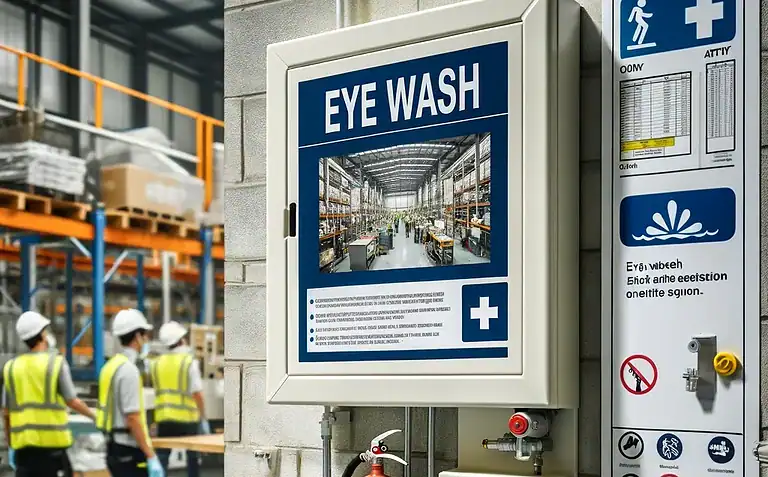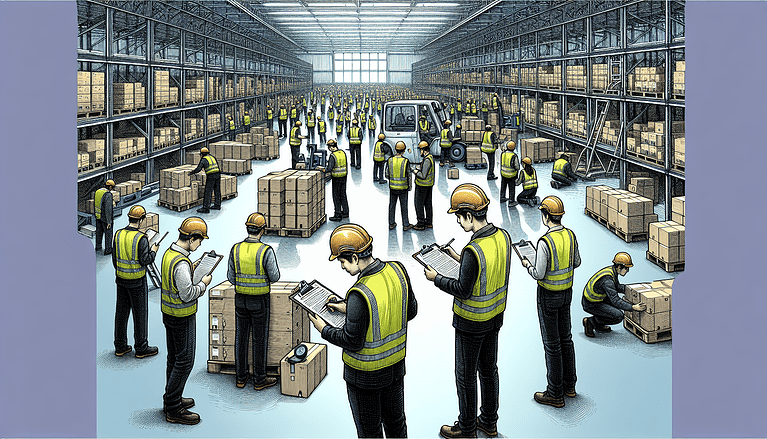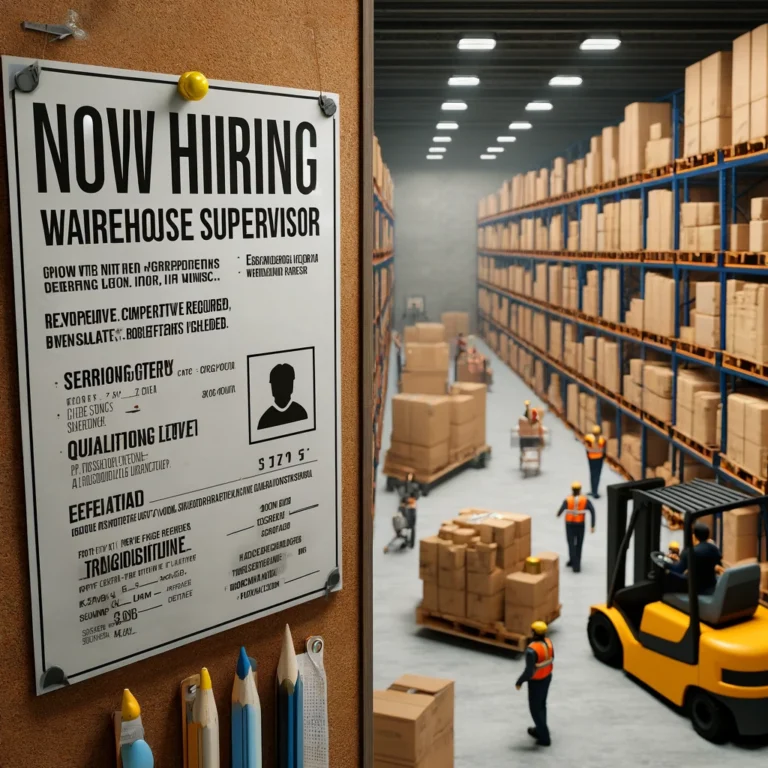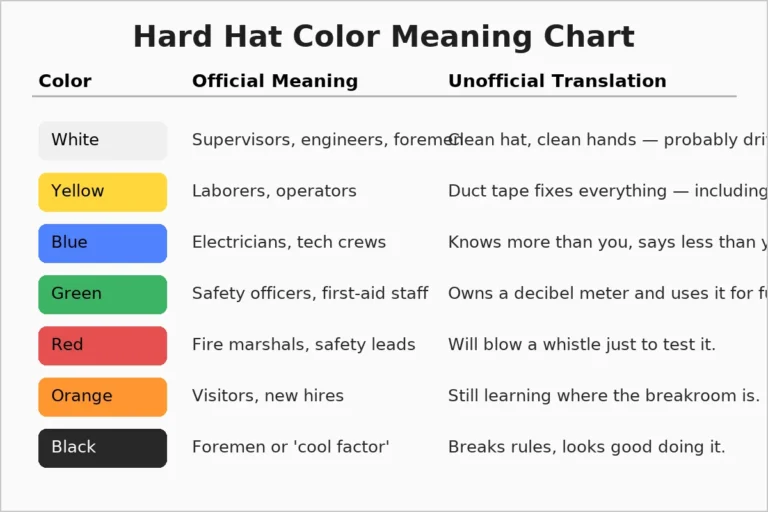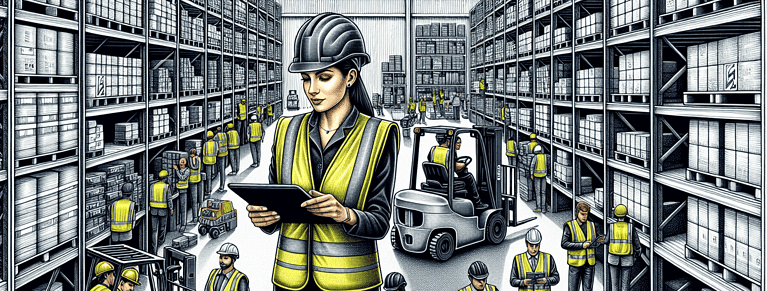“Work Smarter Not Harder” – What Does That Even Mean?
Ever feel like you’re constantly chasing down tasks in your warehouse? You dodge forklifts, manage mountains of inventory, and juggle customer demands – all while the clock seems to be ticking faster than ever.
You and your team put in the effort, there’s no doubt about it, but is that effort always translating into the results you need? And why do people keep telling you to work smarter, not harder, instead of just putting in longer hours?

You’ve heard the saying all too often, but what does it mean to work smarter, not harder? Being an IE (Industrial Engineer), I foster this concept daily. But in today’s world, you need to do both. Let’s discuss.
Introduction: Working Hard vs. Working Smart
There’s a saying that goes, “work smarter, not harder.” In the fast-paced world of warehouse management, that motto might as well be etched on the entrance sign.
Sure, putting in long hours and sheer muscle can get the job done, but what if there was a way to achieve the same results (or even better ones) by focusing on important tasks with less stress and more efficiency?
That’s the power of working smarter, not harder, and in this article, we’ll explore exactly what that means and how you can implement it in your warehouse for a smoother, more productive operation.
What Does “Work Smarter Not Harder” Mean?
Forget about cutting corners or avoiding work altogether. Effective communication skills ensure tasks and projects are completed seamlessly, saving time and enhancing decision-making abilities. Working smarter means ditching the frantic scrambling and replacing it with strategic planning and optimized workflows. It’s about maximizing your output without burning out your team or yourself.
Here are the key pillars of this approach:
Prioritization
Schedule tasks based on your energy levels and productivity to ensure efficiency and customer satisfaction. Imagine tackling the rush orders with tight deadlines first, then methodically working through routine inventory checks. At the same time, you must ensure your team is happy and achieving their hourly goals. It sounds like a lot of work to the under-informed.
Automation
Technology can automate nominal tasks like data entry for incoming shipments or simple product movements between storage locations, freeing up your team for more strategic work like managing complex orders or implementing new procedures. Figure out how to utilize Artificial Intelligence in your daily tasks and activities.
Process Optimization
Take a critical look at your existing workflows. Project managers can play a crucial role in identifying and addressing inefficiencies. Are there bottlenecks slowing things down at receiving or picking stations? Maybe a layout tweak that groups similar items can improve product flow, or implementing batch picking for orders with overlapping items can save valuable time switching between products.
Time Management
Distractions are the enemy of efficiency. Designate focused work zones for pickers and packers to minimize interruptions, schedule deliveries during off-peak hours to avoid congestion at the receiving dock, and teach your team time management techniques like the Pomodoro Technique to stay on track and avoid burnout.
The Pomodoro Technique is a time management method developed by Francesco Cirillo in the late 1980s. It involves breaking work into intervals, traditionally 25 minutes in length, called “pomodoros,” separated by short breaks. The steps are:
- Choose a task you want to work on.
- Set a timer for 25 minutes.
- Work on the task until the timer rings.
- Take a short break (5 minutes).
- After four pomodoros, take a longer break (15-30 minutes).
This technique helps improve focus, productivity, and mental agility by encouraging sustained periods of concentration and regular breaks.
Signs You Are Working Harder Without the Smarter
Here are a few examples that indicate you are working hard but not smart by trying to juggle more than one task at a time:
Solving the Same Problem Over and Over
Imagine a warehouse worker constantly restocking a specific item that seems to disappear quickly. Aligning tasks with one’s energy levels can help manage such repetitive tasks more effectively. They work harder, restocking multiple times daily, without questioning why it depletes so fast.
A smarter approach would be to investigate – perhaps the demand is higher than anticipated, or the designated storage area is too small. Addressing the root cause (increased stock allocation or a larger storage area) saves time and ensures long-term efficiency.
Manual Data Entry
A worker spends hours manually entering data from packing slips into a spreadsheet. This repetitive task is prone to errors and consumes valuable time. Working smarter involves exploring automation options.
Barcode scanners linked to a warehouse management system (WMS) can instantly capture data, reducing errors and freeing workers for more strategic tasks.
Unstructured Picking Routes
A picker navigates the warehouse, picking items randomly and creating a long, inefficient route. Working smarter means implementing picking optimization software that generates optimized routes based on item location and order requirements. This minimizes travel time and maximizes picking efficiency.
Ignoring Communication Tools
Team members often share information solely through face-to-face communication or handwritten notes, leading to missed updates, delays, and confusion. For a visual learner, having details in writing and using notes for reference can be crucial for staying focused and organized. A smarter approach involves utilizing instant messaging or project management software.
These tools ensure everyone can access real-time information, fostering collaboration and streamlined operations.
How to Stop Fighting the Same Battles (an example)
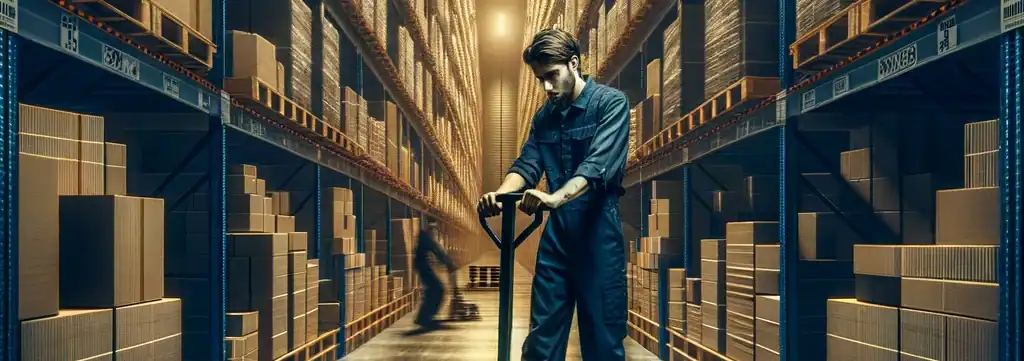
Scenario
You constantly remind your team about the importance of clear and accurate labeling on outgoing shipments. Labels with missing information or mistakes lead to delays (mis-scans), frustrated customers, and rework. You feel like you’re having the same conversation repeatedly, but the errors persist.
Working Harder, Not Smarter
Micromanaging: You resort to micromanaging the labeling process, double-checking every label before it goes out. This is stressful for you and creates a bottleneck in the workflow.
Constant Reminders: You hold daily meetings to reiterate labeling guidelines, but the message doesn’t seem to stick (pun intended).
Working Smarter
Identify the Root Cause: Instead of assuming carelessness, have a conversation with your team. Are the labeling instructions unclear? Is there a lack of training on the labeling system? Maybe the software is clunky and prone to errors.
Invest in Training: Provide clear and concise training on labeling procedures, emphasizing the importance of accuracy. Consider creating visual aids like checklists or flowcharts.
Empower Your Team: Instead of micromanaging, empower your team to take ownership of the labeling process. Please encourage them to identify areas for improvement and suggest solutions.
Positive Reinforcement: Acknowledge and reward good labeling practices. Publicly recognize individuals or teams with consistently accurate labels.
Benefits
You can create a more sustainable solution by taking a step back and addressing the root cause. Your team will feel valued and empowered, leading to increased engagement and ownership. This translates to decreased labeling errors, smoother operations, and happier customers.
Now that we’ve unpacked what “working smarter, not harder” means in the warehouse context, let’s delve into its tangible benefits for your operation. It’s not just about feeling good—it’s about achieving real, measurable results.
Here are some key advantages to consider:
Increased Productivity with Complete Tasks
Imagine completing more tasks in less time. Establishing a strong work-life balance is crucial for stress management and productivity. By streamlining workflows, prioritizing efficiently, and leveraging automation, your team can power through their workload with greater output. This translates to faster order fulfillment, quicker inventory turnaround, and the ability to handle increased demand without scrambling.
Reduced Stress by Reducing Repetitive Tasks
The constant pressure of deadlines and workloads can take a toll. Working smarter creates a calmer work environment. With optimized processes and clear priorities, your team can focus on the task without feeling overwhelmed, leading to a happier and more motivated workforce.
Improved Employee Morale
When workers see the positive impact of working smarter, morale increases. They feel valued for their contributions and empowered to work efficiently. This translates to a more engaged team that takes ownership of their tasks and strives for continuous improvement.
Cost Savings
Think beyond labor costs. Optimized processes can minimize wasted resources. Less time spent searching for misplaced inventory, fewer errors requiring rework, and reduced reliance on overtime all contribute to significant cost savings.
Improved Customer Satisfaction
When your warehouse runs smoothly, it translates to happier customers. Faster picking and packing times mean quicker order fulfillment, which keeps customers satisfied. Additionally, fewer picking errors ensure they receive the right products every time.
Encouraging a “Work Smarter, Not Harder” Culture

So, you’re convinced of the benefits, but how do you translate this “work smarter, not harder” philosophy into a thriving reality within your warehouse? Here’s how to cultivate a culture of efficiency and optimization:
Lead by Example
Actions speak louder than words, and everyone watches you (make no mistake). Demonstrate your commitment to working smarter by streamlining your processes and prioritizing tasks effectively. When your team sees leadership embracing these principles, they’ll be more likely to follow suit.
Communication is Key
Don’t keep your team in the dark. Discuss the benefits of working smarter with your employees and explain the reasoning behind any workflow changes, such as scheduling tasks based on energy levels and productivity. This transparency fosters buy-in and encourages them to see the bigger picture.
Openness to Suggestions
Innovation often comes from the front lines. Encourage your team to share ideas for improvement. Maybe a picker has a more efficient way to organize their cart, or a packer has noticed a bottleneck in the packaging process. Create a space where these suggestions are heard and valued.
Invest in Training
Equip your team with the tools they need to succeed. Provide training on time management techniques, new warehouse technologies like WMS systems, or basic ergonomics to prevent injuries. A well-trained workforce is a more efficient workforce.
Recognition and Rewards
Positive reinforcement goes a long way. Acknowledge and celebrate success stories! Did a team implement a new picking strategy that boosted efficiency? Did an employee identify a process improvement that saved time? Recognizing these achievements motivates others to strive for excellence.

Conclusion
“Work smarter, not harder” isn’t just a catchy phrase — it’s a powerful philosophy that can transform your warehouse operation.
By prioritizing tasks, leveraging technology, optimizing workflows, and managing time effectively, you can significantly improve productivity, employee morale, and customer satisfaction – all while reducing costs and creating a calmer work environment.
Call to Action
Are you ready to ditch the warehouse whirlwind and embrace smarter working practices? This article has equipped you with the knowledge and strategies to get started.
Start by implementing key strategies, monitor the results, and be open to adapting as you go. With a focus on continuous improvement, your warehouse can become a model of efficiency, and your team can thrive in a work environment that empowers them to succeed.
Visit our Warehouse Whisperer resource library for more education. Remember, we’re here to help you optimize your operation and achieve peak efficiency!
If you need additional help, please get in touch with us here. Our blog posts are created based on content requests from people like you.
Frequently Asked Questions (FAQs)
Isn’t working harder the same as working more efficiently?
Not necessarily. Working hard often involves putting in long hours without a strategic approach. Working smarter is about maximizing output while minimizing wasted effort. It’s about working efficiently and strategically.
How can I convince my team to embrace new ways of working?
Communication is key! Explain the benefits of working smarter, such as reduced stress, improved morale, and increased efficiency. Highlight how these changes will ultimately make their jobs easier and more rewarding. Be open to their feedback and concerns and involve them in implementing new strategies.
What if I don’t have the budget for new technology?
There are many ways to work smarter without breaking the bank. Start by optimizing existing workflows and processes. Explore free or low-cost warehouse management software options. Simple changes like designating focused work zones and implementing time management techniques can yield significant improvements.
How do I measure the success of these “work smarter, not harder” strategies?
Track key metrics like order fulfillment times, picking accuracy, and labor costs before and after implementing changes. This will help you quantify the impact of your efforts. Additionally, employee surveys can gauge morale and satisfaction with the new workflows.

